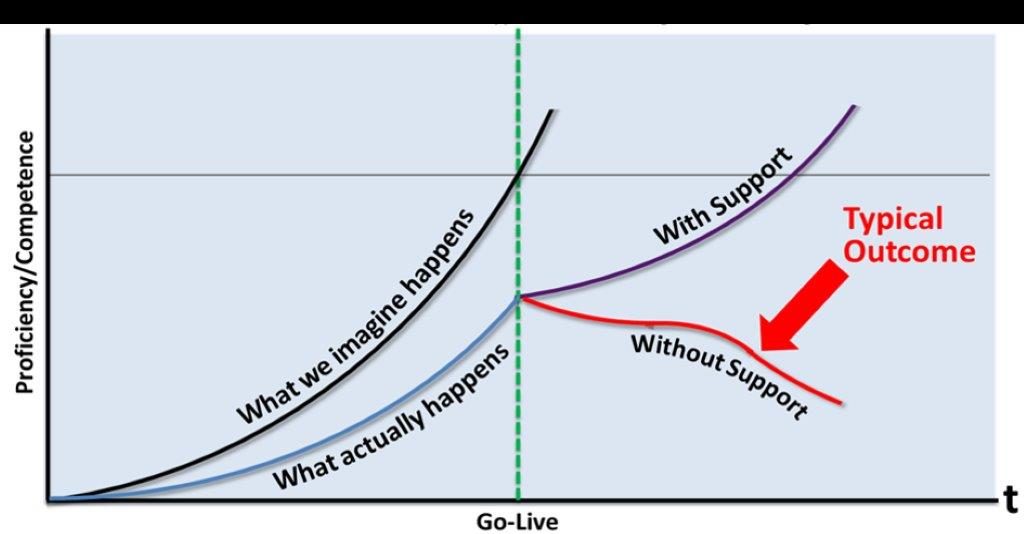How to avoid change management pitfalls and sustain the value of IT investments
Blog: Professional advantage - BPM blog

Picture this: Your business has just spent thousands on a new IT solution. You’ve invested months in research, implementation and training. So, naturally, you expect the solution to deliver lasting value.
But there’s a problem. Fast-forward 12 months and employees have gone back to the old ways of working. With poor user adoption and underused software, realising return on investment seems a distant dream.
What went wrong? The issue often isn’t the software itself. It’s a lack of adequate training and change management. Here’s why both are important, and how to ensure the long-term success of any IT project.
The forgetting curve
Ever attended a professional development course, only to forget what you learned a week later? You’re not alone. Research shows more than 70% of training is lost if not put into practice quickly.
This is called the forgetting curve, and it can have a significant impact on the roll out of new IT systems. When training happens days or weeks before go-live (usually because that’s when subject matter experts are available), users can’t recall everything they need to use the solution optimally.
Instead of reviewing training manuals when they get stuck, these users create workarounds. They develop habits that impact productivity, such as asking colleagues for help, relying on internal support desks, or abandoning the system entirely.
These people aren’t malevolent; they just can’t remember their training. And while they still want to get the job done, they don’t realise their workarounds are undermining processes defined by your subject matter experts.
The first year: Adapting to new ways of working
The first year after go-live is critical for effective change management. During this time, users learn new processes and pass them on to new team members. As we’ve seen, however, inspiring positive behavioural change is often easier said than done. Sending a few employees to a workshop is not enough to spark organisation-wide change.
The second year: Handing down knowledge to new employees
After one year, the normal cycle of staff attrition will have a greater impact on how people use an IT system. As new people are hired and others change roles, effective handovers maintain system efficiency and productivity.
For example, if a user is only 50% effective in their use of the system, they may only transfer 50% of their knowledge to a new employee. The new employee can therefore only harness 25% of the system’s actual potential. This is how company processes and procedures collapse over time.
Engendering change that lasts
To avoid the pitfalls of poorly timed training and incomplete skill transitions, forward-thinking organisations think beyond manuals and workshops. They provide users with ongoing access to process and task-level job aids, such as real-time ‘what now’ guidance and support.

Unlike built-in application help, which broadly describes features and functions, this approach provides process and task-level support. Users can see exactly what is expected and required for each task within and across applications without having to leave the current task.
Introducing PerformancePlus
If your organisation seeks effective change management, long-term system adoption and seamless skills transitions, we recommend an electronic performance support system such as PerformancePlus.
PerformancePlus helps employees use applications correctly for every task – even those that are performed infrequently. This has shown to reduce internal helpdesk demand by up to 25%.
As a user adoption and performance support system, PerformancePlus also reduces time taken to develop:
• UAT scripts
• Custom process training
• User documentation
• Task-based self-service guides
With PerformancePlus, organisations can prepare a suite of training materials – from videos to embedded application support – in time for go-live. All documents are available on demand. Process, task and field level support is available at the click of a button.
The biggest challenge for any system implementation is changing user behaviours. PerformancePlus makes this change easy.
Learn more about PerformancePlus
Professional Advantage recently sponsored performance support expert James Munson’s visit to Australia. James, from Enable your Enterprise, has worked in business transformation since the 1990s. He is intimately familiar with user adoption roadblocks, and the vital role performance support plays in change management. See more from James in this short video.
The post How to avoid change management pitfalls and sustain the value of IT investments appeared first on blog.pa.com.au.
Leave a Comment
You must be logged in to post a comment.







